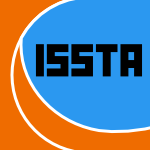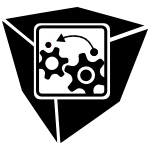126 papers:
 PODS-2015-Jordan #big data
PODS-2015-Jordan #big data- Computational Thinking, Inferential Thinking and “Big Data” (MIJ), p. 1.
 CSEET-2015-BoehmM
CSEET-2015-BoehmM- System Thinking: Educating T-Shaped Software Engineers (BWB, SKM), pp. 13–16.
 ITiCSE-2015-CaetanoO #performance
ITiCSE-2015-CaetanoO #performance- Computational Thinking and Child Performance in a Preschool (GC, OO), pp. 57–62.
 ITiCSE-2015-KafuraBC #design
ITiCSE-2015-KafuraBC #design- Design and Preliminary Results From a Computational Thinking Course (DGK, ACB, BC), pp. 63–68.
 ITiCSE-2015-Meerbaum-Salant #industrial
ITiCSE-2015-Meerbaum-Salant #industrial- “Computer Science, Academia and Industry” as pedagogical model to enhance Computational thinking (OMS, BH, SP), p. 341.
 ITiCSE-2015-Soyslo #algorithm #student
ITiCSE-2015-Soyslo #algorithm #student- From Algorithmic to Computational Thinking: On the Way for Computing for all Students (MMS), p. 1.
 ITiCSE-2015-Thomas #algorithm #women
ITiCSE-2015-Thomas #algorithm #women- Supporting Computational Algorithmic Thinking (SCAT): Exploring the difficulties African-American middle school girls face while enacting computational algorithmic thinking (JOT), pp. 69–74.
 CHI-2015-MunteanuMMROV #human-computer #interactive #requirements
CHI-2015-MunteanuMMROV #human-computer #interactive #requirements- Situational Ethics: Re-thinking Approaches to Formal Ethics Requirements for Human-Computer Interaction (CM, HM, WM, MR, SO, JV), pp. 105–114.
 CHI-2015-TaylorLRSVGL #community #named
CHI-2015-TaylorLRSVGL #community #named- Data-in-Place: Thinking through the Relations Between Data and Community (AST, SEL, TR, DS, VV, LG, JL), pp. 2863–2872.
 CSCW-2015-JafarinaimiM
CSCW-2015-JafarinaimiM- Collective Intelligence or Group Think?: Engaging Participation Patterns in World without Oil (NJ, EMM), pp. 1872–1881.
 CSCW-2015-KoganPA #twitter
CSCW-2015-KoganPA #twitter- Think Local, Retweet Global: Retweeting by the Geographically-Vulnerable during Hurricane Sandy (MK, LP, KMA), pp. 981–993.
 DUXU-DD-2015-ChasanidouGL #design #tool support
DUXU-DD-2015-ChasanidouGL #design #tool support- Design Thinking Methods and Tools for Innovation (DC, AAG, EL), pp. 12–23.
 DUXU-DD-2015-Fabri #design #education #lessons learnt #student
DUXU-DD-2015-Fabri #design #education #lessons learnt #student- Thinking with a New Purpose: Lessons Learned from Teaching Design Thinking Skills to Creative Technology Students (MF), pp. 32–43.
 DUXU-DD-2015-XimenesAA #agile #design #project management
DUXU-DD-2015-XimenesAA #agile #design #project management- Software Project Management Combining Agile, Lean Startup and Design Thinking (BHX, INA, CCA), pp. 356–367.
 DUXU-IXD-2015-PanY #design
DUXU-IXD-2015-PanY #design- A Practice on Wayfinding System Design with Service Design Thinking (JP, ZY), pp. 400–411.
 LCT-2015-SarmentoRZAT #development #framework #smarttech
LCT-2015-SarmentoRZAT #development #framework #smarttech- Supporting the Development of Computational Thinking: A Robotic Platform Controlled by Smartphone (HRS, CASR, VZ, LDAA, CAT), pp. 124–135.
 ICSE-v2-2015-BoehmM
ICSE-v2-2015-BoehmM- System Thinking: Educating T-Shaped Software Engineers (BWB, SKM), pp. 333–342.
 ICSE-v2-2015-NewmanFSFFW #design #physics #prototype #re-engineering #social
ICSE-v2-2015-NewmanFSFFW #design #physics #prototype #re-engineering #social- The Role of Design Thinking and Physical Prototyping in Social Software Engineering (PN, MAF, WS, SF, AF, JW), pp. 487–496.
 ICSE-v2-2015-WermelingerHRBR #education
ICSE-v2-2015-WermelingerHRBR #education- Teaching Software Systems Thinking at The Open University (MW, JGH, LR, LB, MR, AKB), pp. 307–310.
 CSL-2015-Williams
CSL-2015-Williams- Thinking Algorithmically About Impossibility (Invited Talk) (RRW), pp. 14–23.
 ISSTA-2015-RojasFA #automation #development #empirical #generative #testing
ISSTA-2015-RojasFA #automation #development #empirical #generative #testing- Automated unit test generation during software development: a controlled experiment and think-aloud observations (JMR, GF, AA), pp. 338–349.
 ITiCSE-2014-Katai14c #algorithm #perspective
ITiCSE-2014-Katai14c #algorithm #perspective- Algorithmic thinking for ALL: a motivational perspective (ZK), p. 353.
 ITiCSE-2014-KohNBR #analysis #validation
ITiCSE-2014-KohNBR #analysis #validation- Early validation of computational thinking pattern analysis (KHK, HN, ARB, AR), pp. 213–218.
 ITiCSE-2014-KothiyalMI #learning #question #scalability
ITiCSE-2014-KothiyalMI #learning #question #scalability- Think-pair-share in a large CS1 class: does learning really happen? (AK, SM, SI), pp. 51–56.
 ITiCSE-2014-SouzaSLS #research
ITiCSE-2014-SouzaSLS #research- Cultural appropriation of computational thinking acquisition research: seeding fields of diversity (CSdS, LCdCS, CFL, MMS), pp. 117–122.
 ITiCSE-2014-WhalleyK
ITiCSE-2014-WhalleyK- A qualitative think-aloud study of novice programmers’ code writing strategies (JLW, NK), pp. 279–284.
 ITiCSE-WGR-2014-MannilaDDGMRS #education
ITiCSE-WGR-2014-MannilaDDGMRS #education- Computational Thinking in K-9 Education (LM, VD, BD, NG, CM, LR, AS), pp. 1–29.
 CHI-2014-PikeMPSW #protocol #using
CHI-2014-PikeMPSW #protocol #using- Measuring the effect of think aloud protocols on workload using fNIRS (MFP, HAM, MP, SCS, MLW), pp. 3807–3816.
 CHI-2014-TanLS #case study #experience #game studies #video
CHI-2014-TanLS #case study #experience #game studies #video- Combining think-aloud and physiological data to understand video game experiences (CTT, TWL, SS), pp. 381–390.
 CSCW-2014-GanglbauerFSG #case study #community #network #social
CSCW-2014-GanglbauerFSG #case study #community #network #social- Think globally, act locally: a case study of a free food sharing community and social networking (EG, GF, ÖS, FG), pp. 911–921.
 DUXU-DI-2014-MullingLC #android #design #gesture #interactive #interface
DUXU-DI-2014-MullingLC #android #design #gesture #interactive #interface- Gestural Interfaces Touchscreen: Thinking Interactions beyond the Button from Interaction Design for Gmail Android App (TM, CL, AC), pp. 279–288.
 DUXU-DI-2014-PaulaMA #design #experience #mobile #quality #usability #user interface
DUXU-DI-2014-PaulaMA #design #experience #mobile #quality #usability #user interface- Building a Quality Mobile Application: A User-Centered Study Focusing on Design Thinking, User Experience and Usability (DFOdP, BHXMM, CCA), pp. 313–322.
 DUXU-DI-2014-Schranz #artificial reality #design #hybrid #physics
DUXU-DI-2014-Schranz #artificial reality #design #hybrid #physics- Augmented Reality in Design — Thinking about Hybrid Forms of Virtual and Physical Space in Design (CS), pp. 624–635.
 HIMI-DE-2014-XingGRK #visualisation
HIMI-DE-2014-XingGRK #visualisation- Google Analytics Spatial Data Visualization: Thinking Outside of the Box (WX, RG, BR, TRK), pp. 120–127.
 LCT-NLE-2014-AguadoFDGS #design #education
LCT-NLE-2014-AguadoFDGS #design #education- Course Sprints: Combining Teacher Training, Design Thinking and Hackathons (GA, CFB, MGD, RG, AVS), pp. 3–12.
 LCT-TRE-2014-Stylianou-GeorgiouPI #education #monitoring #web
LCT-TRE-2014-Stylianou-GeorgiouPI #education #monitoring #web- Monitoring Teachers’ Complex Thinking while Engaging in Philosophical Inquiry with Web 2.0 (ASG, AP, AI), pp. 319–327.
 LCT-TRE-2014-Timotheou
LCT-TRE-2014-Timotheou- Reflective Thinking: Exploring Blog Use by Adult Learners (MMT), pp. 460–466.
 PODS-2013-AbiteboulV #collaboration #data-driven #workflow
PODS-2013-AbiteboulV #collaboration #data-driven #workflow- Collaborative data-driven workflows: think global, act local (SA, VV), pp. 91–102.
 VLDB-2014-TianBCTM13 #graph
VLDB-2014-TianBCTM13 #graph- From “Think Like a Vertex” to “Think Like a Graph” (YT, AB, SAC, ST, JM), pp. 193–204.
 ITiCSE-2013-GouwsBW #education #evaluation #game studies #process
ITiCSE-2013-GouwsBW #education #evaluation #game studies #process- Computational thinking in educational activities: an evaluation of the educational game light-bot (LAG, KLB, PW), pp. 10–15.
 ITiCSE-2013-QureshiEP #bound #student
ITiCSE-2013-QureshiEP #bound #student- Students organizing against pollution: computational thinking across boundaries (SQ, FE, SMP), p. 356.
 ITiCSE-2013-SettleGB
ITiCSE-2013-SettleGB- Beyond computer science: computational thinking across disciplines (AS, DSG, VB), pp. 311–312.
 ITiCSE-2013-WaldenDGH
ITiCSE-2013-WaldenDGH- An informatics perspective on computational thinking (JW, MD, RG, ZH), pp. 4–9.
 CHI-2013-McDonaldP #testing
CHI-2013-McDonaldP #testing- The effect of global instructions on think-aloud testing (SM, HP), pp. 2941–2944.
 CHI-2013-ParkerMGACJM #health #online #what
CHI-2013-ParkerMGACJM #health #online #what- I am what i eat: identity & critical thinking in an online health forum for kids (AGP, IM, CG, VA, WC, VJ, EDM), pp. 2437–2446.
 DUXU-CXC-2013-KimJ #design #development #experience #modelling
DUXU-CXC-2013-KimJ #design #development #experience #modelling- Musical Experience Development Model Based on Service Design Thinking (SK, ECJ), pp. 199–208.
 DUXU-CXC-2013-WangTKS #evaluation #eye tracking #performance #predict
DUXU-CXC-2013-WangTKS #evaluation #eye tracking #performance #predict- Banner Evaluation Predicted by Eye Tracking Performance and the Median Thinking Style (MYW, DLT, CTK, VCS), pp. 129–138.
 DUXU-PMT-2013-AdikariMC #agile #design #experience #user interface
DUXU-PMT-2013-AdikariMC #agile #design #experience #user interface- Reframed Contexts: Design Thinking for Agile User Experience Design (SA, CM, JAC), pp. 3–12.
 DUXU-PMT-2013-SandinoMV #design #interactive #realtime
DUXU-PMT-2013-SandinoMV #design #interactive #realtime- Design Thinking Methodology for the Design of Interactive Real-Time Applications (DS, LMM, GV), pp. 583–592.
 DUXU-WM-2013-ShenP #performance
DUXU-WM-2013-ShenP #performance- Re-thinking Bookmark Management — Less Choice Is More Efficient (STS, SDP), pp. 304–312.
 HCI-AS-2013-HuaG #comprehension #difference #evaluation #predict #protocol #safety #usability
HCI-AS-2013-HuaG #comprehension #difference #evaluation #predict #protocol #safety #usability- Usability Evaluation of a Voluntary Patient Safety Reporting System: Understanding the Difference between Predicted and Observed Time Values by Retrospective Think-Aloud Protocols (LH, YG), pp. 94–100.
 SIGMOD-2012-ZukowskiB #challenge #research
SIGMOD-2012-ZukowskiB #challenge #research- From x100 to vectorwise: opportunities, challenges and things most researchers do not think about (MZ, PAB), pp. 861–862.
 ITiCSE-2012-Khalifa #data type
ITiCSE-2012-Khalifa #data type- Intuitive thinking while dealing with abstract data types (WK), p. 391.
 ITiCSE-2012-SettleFHSJRW #education
ITiCSE-2012-SettleFHSJRW #education- Infusing computational thinking into the middle- and high-school curriculum (AS, BF, RH, FS, CJ, CRM, BW), pp. 22–27.
 TFPIE-2012-PageG #how
TFPIE-2012-PageG #how- How Computers Work: Computational Thinking for Everyone (RP, RG), pp. 1–19.
 MSR-2012-BettenburgNH #fault #modelling #predict
MSR-2012-BettenburgNH #fault #modelling #predict- Think locally, act globally: Improving defect and effort prediction models (NB, MN, AEH), pp. 60–69.
 CHI-2012-BonsignoreKVHFD #design #game studies
CHI-2012-BonsignoreKVHFD #design #game studies- Game design for promoting counterfactual thinking (EMB, KK, AV, DLH, AF, AD), pp. 2079–2082.
 CHI-2012-CoxCSC #challenge #experience #game studies
CHI-2012-CoxCSC #challenge #experience #game studies- Not doing but thinking: the role of challenge in the gaming experience (ALC, PAC, PS, MC), pp. 79–88.
 CHI-2012-SchneiderSMESS #collaboration #named #student
CHI-2012-SchneiderSMESS #collaboration #named #student- Phylo-Genie: engaging students in collaborative “tree-thinking” through tabletop techniques (BS, MS, LM, SE, OS, CS), pp. 3071–3080.
 CHI-2012-VitakIDEG #learning
CHI-2012-VitakIDEG #learning- Gaze-augmented think-aloud as an aid to learning (SAV, JEI, ATD, SE, AKG), pp. 2991–3000.
 CSCW-2012-Nagar #community #online #process #what
CSCW-2012-Nagar #community #online #process #what- What do you think?: the structuring of an online community as a collective-sensemaking process (YN), pp. 393–402.
 CSCW-2012-XuB #case study #community #interactive #online #scalability #what
CSCW-2012-XuB #case study #community #interactive #online #scalability #what- What do you think?: a case study of benefit, expectation, and interaction in a large online critique community (AX, BPB), pp. 295–304.
 KR-2012-CohnRS #analysis #representation #video
KR-2012-CohnRS #analysis #representation #video- Thinking Inside the Box: A Comprehensive Spatial Representation for Video Analysis (AGC, JR, MS).
 ITiCSE-2011-Hu #what
ITiCSE-2011-Hu #what- Computational thinking: what it might mean and what we might do about it (CH), pp. 223–227.
 SCAM-2011-Black #debugging
SCAM-2011-Black #debugging- Counting Bugs is Harder Than You Think (PEB), pp. 1–9.
 CHI-2011-EllingLJ #eye tracking #using
CHI-2011-EllingLJ #eye tracking #using- Retrospective think-aloud method: using eye movements as an extra cue for participants’ verbalizations (SE, LL, MdJ), pp. 1161–1170.
 CHI-2011-Freeman #eye tracking #protocol #usability #using
CHI-2011-Freeman #eye tracking #protocol #usability #using- Triggered think-aloud protocol: using eye tracking to improve usability test moderation (BF), pp. 1171–1174.
 DUXU-v1-2011-Innes #design #enterprise #why
DUXU-v1-2011-Innes #design #enterprise #why- Why Enterprises Can’t Innovate: Helping Companies Learn Design Thinking (JI), pp. 442–448.
 HCD-2011-HoriKK #testing #usability
HCD-2011-HoriKK #testing #usability- Investigation of Indirect Oral Operation Method for Think Aloud Usability Testing (MH, YK, TK), pp. 38–46.
 ICEIS-v1-2011-Wang
ICEIS-v1-2011-Wang- Strategic Thinking of Public Service Facilities of Urban Tourism System (XW), pp. 448–452.
 ICSE-2011-Dresselhaus #design #roadmap
ICSE-2011-Dresselhaus #design #roadmap- Exciting new trends in design thinking (BD), p. 622.
 DAC-2010-ChakradharR #hardware #parallel
DAC-2010-ChakradharR #hardware #parallel- Best-effort computing: re-thinking parallel software and hardware (STC, AR), pp. 865–870.
 HT-2010-Dillon
HT-2010-Dillon- As we may have thought, and may (still) think (AD), pp. 1–2.
 ITiCSE-2010-GurselG #student #what
ITiCSE-2010-GurselG #student #what- What do promising high school students think about studying computing (DAG, BG), p. 325.
 ITiCSE-2010-MillerPS
ITiCSE-2010-MillerPS- File references, trees, and computational thinking (CSM, LP, AS), pp. 132–136.
 ITiCSE-2010-PerkovicSHJ #education #framework
ITiCSE-2010-PerkovicSHJ #education #framework- A framework for computational thinking across the curriculum (LP, AS, SH, JJ), pp. 123–127.
 CHI-2010-AndrewsEN #scalability
CHI-2010-AndrewsEN #scalability- Space to think: large high-resolution displays for sensemaking (CA, AE, CN), pp. 55–64.
 CHI-2010-BaumerST
CHI-2010-BaumerST- America is like Metamucil: fostering critical and creative thinking about metaphor in political blogs (EPSB, JS, BT), pp. 1437–1446.
 CHI-2010-Olmsted-HawalaMHA #comparison #protocol #testing #usability #web
CHI-2010-Olmsted-HawalaMHA #comparison #protocol #testing #usability #web- Think-aloud protocols: a comparison of three think-aloud protocols for use in testing data-dissemination web sites for usability (ELOH, EDM, SH, KTA), pp. 2381–2390.
 CSCW-2010-WangCF #idea #visual notation
CSCW-2010-WangCF #idea #visual notation- Idea expander: supporting group brainstorming with conversationally triggered visual thinking stimuli (HCW, DC, SRF), pp. 103–106.
 KR-2010-Halpern10a
KR-2010-Halpern10a- I Don’t Want to Think About it Now: Decision Theory with Costly Computation (JYH).
 CC-2010-BenabderrahmanePCB
CC-2010-BenabderrahmanePCB- The Polyhedral Model Is More Widely Applicable Than You Think (MWB, LNP, AC, CB), pp. 283–303.
 HT-2009-Efimova
HT-2009-Efimova- Weblog as a personal thinking space (LE), pp. 289–298.
 SIGMOD-2009-Chi #social #using #web
SIGMOD-2009-Chi #social #using #web- Augmented social cognition: using social web technology to enhance the ability of groups to remember, think, and reason (EHC), pp. 973–984.
 ITiCSE-2009-CurzonPTSR #weaving
ITiCSE-2009-CurzonPTSR #weaving- Computational thinking (CT): on weaving it in (PC, JP, HGT, AS, ER), pp. 201–202.
 ITiCSE-2009-MitchellPH #question #what
ITiCSE-2009-MitchellPH #question #what- Computing science: what do pupils think? (AM, HCP, JH), p. 353.
 ITiCSE-2009-PargasB #question #what
ITiCSE-2009-PargasB #question #what- What were they thinking? (RPP, SPB), pp. 134–138.
 CHI-2009-LimLL
CHI-2009-LimLL- Interactivity attributes: a new way of thinking and describing interactivity (YKL, SSL, KyL), pp. 105–108.
 CHI-2009-RaoHNJ #recommendation
CHI-2009-RaoHNJ #recommendation- My Dating Site Thinks I’m a Loser: effects of personal photos and presentation intervals on perceptions of recommender systems (SR, TH, CN, NJ), pp. 221–224.
 HCI-NIMT-2009-ChenOYFT #communication
HCI-NIMT-2009-ChenOYFT #communication- Prompter “.” Based Creating Thinking Support Communication System That Allows Hand-Drawing (LJC, JO, SY, SF, YT), pp. 783–790.
 ICML-2009-PoczosASGS #exclamation #learning
ICML-2009-PoczosASGS #exclamation #learning- Learning when to stop thinking and do something! (BP, YAY, CS, RG, NRS), pp. 825–832.
 RecSys-2009-AbbassiALVY #recommendation
RecSys-2009-AbbassiALVY #recommendation- Getting recommender systems to think outside the box (ZA, SAY, LVSL, SV, CY), pp. 285–288.
 PPoPP-2009-Blelloch #parallel
PPoPP-2009-Blelloch #parallel- Parallel thinking (GEB), pp. 1–2.
 CSEET-2008-Epstein #agile #how #process #student
CSEET-2008-Epstein #agile #how #process #student- Getting Students to Think About How Agile Processes can be Made More Secure (RGE), pp. 51–58.
 ITiCSE-2008-Armoni #algorithm
ITiCSE-2008-Armoni #algorithm- Reductive thinking in a quantitative perspective: the case of the algorithm course (MA), pp. 53–57.
 CHI-2008-MamykinaMDG #named #social
CHI-2008-MamykinaMDG #named #social- MAHI: investigation of social scaffolding for reflective thinking in diabetes management (LM, EDM, PD, DG), pp. 477–486.
 ITiCSE-2007-Hanson #education
ITiCSE-2007-Hanson #education- Inclusive thinking in computer science education (VLH), p. 3.
 CHI-2007-BoshernitsanGH #development #tool support
CHI-2007-BoshernitsanGH #development #tool support- Aligning development tools with the way programmers think about code changes (MB, SLG, MAH), pp. 567–576.
 ITiCSE-2006-ArmoniGH
ITiCSE-2006-ArmoniGH- Reductive thinking in undergraduate CS courses (MA, JGE, OH), pp. 133–137.
 ITiCSE-2006-Bures
ITiCSE-2006-Bures- Systems thinking as a basis for ambient intelligence (VB), p. 318.
 CHI-2006-GuanLCR #eye tracking
CHI-2006-GuanLCR #eye tracking- The validity of the stimulated retrospective think-aloud method as measured by eye tracking (ZG, SL, EC, JR), pp. 1253–1262.
 CHI-2006-SiekCR #how #learning #people
CHI-2006-SiekCR #how #learning #people- Pride and prejudice: learning how chronically ill people think about food (KAS, KHC, YR), pp. 947–950.
 RE-2006-Al-AniS #question #requirements
RE-2006-Al-AniS #question #requirements- So, You Think You Are a Requirements Engineer? (BAA, SES), pp. 330–331.
 CAV-2006-Dill
CAV-2006-Dill- I Think I Voted: E-Voting vs. Democracy (DLD), p. 2.
 ITiCSE-2005-ArmoniG
ITiCSE-2005-ArmoniG- Reductive thinking in undergraduate CS courses (MA, JGE), p. 362.
 ITiCSE-2005-Massarelli
ITiCSE-2005-Massarelli- The difficult art of pruning in favour of creative thinking (RM), p. 368.
 ITiCSE-2005-Rao
ITiCSE-2005-Rao- Infusing critical thinking skills into content of AI course (MRKKR), pp. 173–177.
 SIGIR-2005-EfthimiadisH #how #student
SIGIR-2005-EfthimiadisH #how #student- Search engines and how students think they work (ENE, DGH), pp. 595–596.
 CGO-2005-Hind #architecture #machine learning #virtual machine
CGO-2005-Hind #architecture #machine learning #virtual machine- Virtual Machine Learning: Thinking like a Computer Architect (MH), p. 11.
 ITiCSE-2004-Armoni #education #how #question
ITiCSE-2004-Armoni #education #how #question- Reductive thinking: how to teach it? (MA), p. 280.
 CHI-2004-LudfordCFT #community #difference #online #using
CHI-2004-LudfordCFT #community #difference #online #using- Think different: increasing online community participation using uniqueness and group dissimilarity (PJL, DC, DF, LGT), pp. 631–638.
 VISSOFT-2003-Ware #interactive #tutorial #visualisation
VISSOFT-2003-Ware #interactive #tutorial #visualisation- Thinking with Interactive Visualization (Tutorial/Keynote) (CW), pp. 2–28.
 SAC-2003-Landrin-SchweitzerCPL #algorithm #interactive
SAC-2003-Landrin-SchweitzerCPL #algorithm #interactive- Introducing Lateral Thinking in Search Engines with Interactive Evolutionary Algorithms (YLS, PC, TP, EL), pp. 214–219.
 VLDB-2002-WeikumMHZ #database #information management #self
VLDB-2002-WeikumMHZ #database #information management #self- Self-tuning Database Technology and Information Services: from Wishful Thinking to Viable Engineering (GW, AM, CH, PZ), pp. 20–31.
 ITiCSE-2002-CarboneS #education #learning #question #student #what
ITiCSE-2002-CarboneS #education #learning #question #student #what- A studio-based teaching and learning model in IT: what do first year students think? (AC, JS), pp. 213–217.
 KDD-2001-Elkan #challenge #data mining #lessons learnt #mining
KDD-2001-Elkan #challenge #data mining #lessons learnt #mining- Magical thinking in data mining: lessons from CoIL challenge 2000 (CE), pp. 426–431.
 CHI-2000-BreretonM #communication #design #how
CHI-2000-BreretonM #communication #design #how- An observational study of how objects support engineering design thinking and communication: implications for the design of tangible media (MB, BM), pp. 217–224.
 ITiCSE-1999-Ben-AriK #concurrent #learning #parallel #process
ITiCSE-1999-Ben-AriK #concurrent #learning #parallel #process- Thinking parallel: the process of learning concurrency (MBA, YBDK), pp. 13–16.
 ICALP-1999-Bruijn #memory management
ICALP-1999-Bruijn #memory management- A Model for Associative Memory, a Basis for Thinking and Consciousness (NGdB), pp. 74–89.
 ITiCSE-1998-FernandezR #object-oriented #using #visualisation
ITiCSE-1998-FernandezR #object-oriented #using #visualisation- Using visualisation to improve object-oriented thinking (poster) (AF, GR), p. 280.
 CHI-1998-ResnickMBBCKS
CHI-1998-ResnickMBBCKS- Digital Manipulatives: New Toys to Think With (MR, FM, RB, RB, VC, KK, BS), pp. 281–287.
 HCI-SHI-1993-Nakamura93a #problem #tool support
HCI-SHI-1993-Nakamura93a #problem #tool support- Problem Solving Support System as Thinking Acceleration Tools (TN), pp. 297–302.
 TOOLS-PACIFIC-1993-Haebich #object-oriented
TOOLS-PACIFIC-1993-Haebich #object-oriented- Object-Oriented Fundamentals and Object-Oriented Thinking (WH), p. 311.
 OOPSLA-1989-BeckC #education #object-oriented
OOPSLA-1989-BeckC #education #object-oriented- A Laboratory for Teaching Object-Oriented Thinking (KB, WC), pp. 1–6.
 HT-1987-BeemanABLMMS #hypermedia
HT-1987-BeemanABLMMS #hypermedia- Hypertext and Pluralism: From Lineal to Non-Lineal Thinking (WOB, KTA, GB, JL, APM, PM, MS), pp. 67–88.
 STOC-1974-Pratt #matrix #multi #power of
STOC-1974-Pratt #matrix #multi #power of- The Power of Negative Thinking in Multiplying Boolean Matrices (VRP), pp. 80–83.
 PODS-2015-Jordan #big data
PODS-2015-Jordan #big data CSEET-2015-BoehmM
CSEET-2015-BoehmM ITiCSE-2015-CaetanoO #performance
ITiCSE-2015-CaetanoO #performance ITiCSE-2015-KafuraBC #design
ITiCSE-2015-KafuraBC #design ITiCSE-2015-Meerbaum-Salant #industrial
ITiCSE-2015-Meerbaum-Salant #industrial ITiCSE-2015-Soyslo #algorithm #student
ITiCSE-2015-Soyslo #algorithm #student ITiCSE-2015-Thomas #algorithm #women
ITiCSE-2015-Thomas #algorithm #women CHI-2015-MunteanuMMROV #human-computer #interactive #requirements
CHI-2015-MunteanuMMROV #human-computer #interactive #requirements CHI-2015-TaylorLRSVGL #community #named
CHI-2015-TaylorLRSVGL #community #named CSCW-2015-JafarinaimiM
CSCW-2015-JafarinaimiM CSCW-2015-KoganPA #twitter
CSCW-2015-KoganPA #twitter DUXU-DD-2015-ChasanidouGL #design #tool support
DUXU-DD-2015-ChasanidouGL #design #tool support DUXU-DD-2015-Fabri #design #education #lessons learnt #student
DUXU-DD-2015-Fabri #design #education #lessons learnt #student DUXU-DD-2015-XimenesAA #agile #design #project management
DUXU-DD-2015-XimenesAA #agile #design #project management DUXU-IXD-2015-PanY #design
DUXU-IXD-2015-PanY #design LCT-2015-SarmentoRZAT #development #framework #smarttech
LCT-2015-SarmentoRZAT #development #framework #smarttech ICSE-v2-2015-BoehmM
ICSE-v2-2015-BoehmM ICSE-v2-2015-NewmanFSFFW #design #physics #prototype #re-engineering #social
ICSE-v2-2015-NewmanFSFFW #design #physics #prototype #re-engineering #social ICSE-v2-2015-WermelingerHRBR #education
ICSE-v2-2015-WermelingerHRBR #education CSL-2015-Williams
CSL-2015-Williams ISSTA-2015-RojasFA #automation #development #empirical #generative #testing
ISSTA-2015-RojasFA #automation #development #empirical #generative #testing ITiCSE-2014-Katai14c #algorithm #perspective
ITiCSE-2014-Katai14c #algorithm #perspective ITiCSE-2014-KohNBR #analysis #validation
ITiCSE-2014-KohNBR #analysis #validation ITiCSE-2014-KothiyalMI #learning #question #scalability
ITiCSE-2014-KothiyalMI #learning #question #scalability ITiCSE-2014-SouzaSLS #research
ITiCSE-2014-SouzaSLS #research ITiCSE-2014-WhalleyK
ITiCSE-2014-WhalleyK ITiCSE-WGR-2014-MannilaDDGMRS #education
ITiCSE-WGR-2014-MannilaDDGMRS #education CHI-2014-PikeMPSW #protocol #using
CHI-2014-PikeMPSW #protocol #using CHI-2014-TanLS #case study #experience #game studies #video
CHI-2014-TanLS #case study #experience #game studies #video CSCW-2014-GanglbauerFSG #case study #community #network #social
CSCW-2014-GanglbauerFSG #case study #community #network #social DUXU-DI-2014-MullingLC #android #design #gesture #interactive #interface
DUXU-DI-2014-MullingLC #android #design #gesture #interactive #interface DUXU-DI-2014-PaulaMA #design #experience #mobile #quality #usability #user interface
DUXU-DI-2014-PaulaMA #design #experience #mobile #quality #usability #user interface DUXU-DI-2014-Schranz #artificial reality #design #hybrid #physics
DUXU-DI-2014-Schranz #artificial reality #design #hybrid #physics HIMI-DE-2014-XingGRK #visualisation
HIMI-DE-2014-XingGRK #visualisation LCT-NLE-2014-AguadoFDGS #design #education
LCT-NLE-2014-AguadoFDGS #design #education LCT-TRE-2014-Stylianou-GeorgiouPI #education #monitoring #web
LCT-TRE-2014-Stylianou-GeorgiouPI #education #monitoring #web LCT-TRE-2014-Timotheou
LCT-TRE-2014-Timotheou PODS-2013-AbiteboulV #collaboration #data-driven #workflow
PODS-2013-AbiteboulV #collaboration #data-driven #workflow VLDB-2014-TianBCTM13 #graph
VLDB-2014-TianBCTM13 #graph ITiCSE-2013-GouwsBW #education #evaluation #game studies #process
ITiCSE-2013-GouwsBW #education #evaluation #game studies #process ITiCSE-2013-QureshiEP #bound #student
ITiCSE-2013-QureshiEP #bound #student ITiCSE-2013-SettleGB
ITiCSE-2013-SettleGB ITiCSE-2013-WaldenDGH
ITiCSE-2013-WaldenDGH CHI-2013-McDonaldP #testing
CHI-2013-McDonaldP #testing CHI-2013-ParkerMGACJM #health #online #what
CHI-2013-ParkerMGACJM #health #online #what DUXU-CXC-2013-KimJ #design #development #experience #modelling
DUXU-CXC-2013-KimJ #design #development #experience #modelling DUXU-CXC-2013-WangTKS #evaluation #eye tracking #performance #predict
DUXU-CXC-2013-WangTKS #evaluation #eye tracking #performance #predict DUXU-PMT-2013-AdikariMC #agile #design #experience #user interface
DUXU-PMT-2013-AdikariMC #agile #design #experience #user interface DUXU-PMT-2013-SandinoMV #design #interactive #realtime
DUXU-PMT-2013-SandinoMV #design #interactive #realtime DUXU-WM-2013-ShenP #performance
DUXU-WM-2013-ShenP #performance HCI-AS-2013-HuaG #comprehension #difference #evaluation #predict #protocol #safety #usability
HCI-AS-2013-HuaG #comprehension #difference #evaluation #predict #protocol #safety #usability SIGMOD-2012-ZukowskiB #challenge #research
SIGMOD-2012-ZukowskiB #challenge #research ITiCSE-2012-Khalifa #data type
ITiCSE-2012-Khalifa #data type ITiCSE-2012-SettleFHSJRW #education
ITiCSE-2012-SettleFHSJRW #education TFPIE-2012-PageG #how
TFPIE-2012-PageG #how MSR-2012-BettenburgNH #fault #modelling #predict
MSR-2012-BettenburgNH #fault #modelling #predict CHI-2012-BonsignoreKVHFD #design #game studies
CHI-2012-BonsignoreKVHFD #design #game studies CHI-2012-CoxCSC #challenge #experience #game studies
CHI-2012-CoxCSC #challenge #experience #game studies CHI-2012-SchneiderSMESS #collaboration #named #student
CHI-2012-SchneiderSMESS #collaboration #named #student CHI-2012-VitakIDEG #learning
CHI-2012-VitakIDEG #learning CSCW-2012-Nagar #community #online #process #what
CSCW-2012-Nagar #community #online #process #what CSCW-2012-XuB #case study #community #interactive #online #scalability #what
CSCW-2012-XuB #case study #community #interactive #online #scalability #what KR-2012-CohnRS #analysis #representation #video
KR-2012-CohnRS #analysis #representation #video ITiCSE-2011-Hu #what
ITiCSE-2011-Hu #what SCAM-2011-Black #debugging
SCAM-2011-Black #debugging CHI-2011-EllingLJ #eye tracking #using
CHI-2011-EllingLJ #eye tracking #using CHI-2011-Freeman #eye tracking #protocol #usability #using
CHI-2011-Freeman #eye tracking #protocol #usability #using DUXU-v1-2011-Innes #design #enterprise #why
DUXU-v1-2011-Innes #design #enterprise #why HCD-2011-HoriKK #testing #usability
HCD-2011-HoriKK #testing #usability ICEIS-v1-2011-Wang
ICEIS-v1-2011-Wang ICSE-2011-Dresselhaus #design #roadmap
ICSE-2011-Dresselhaus #design #roadmap DAC-2010-ChakradharR #hardware #parallel
DAC-2010-ChakradharR #hardware #parallel HT-2010-Dillon
HT-2010-Dillon ITiCSE-2010-GurselG #student #what
ITiCSE-2010-GurselG #student #what ITiCSE-2010-MillerPS
ITiCSE-2010-MillerPS ITiCSE-2010-PerkovicSHJ #education #framework
ITiCSE-2010-PerkovicSHJ #education #framework CHI-2010-AndrewsEN #scalability
CHI-2010-AndrewsEN #scalability CHI-2010-BaumerST
CHI-2010-BaumerST CHI-2010-Olmsted-HawalaMHA #comparison #protocol #testing #usability #web
CHI-2010-Olmsted-HawalaMHA #comparison #protocol #testing #usability #web CSCW-2010-WangCF #idea #visual notation
CSCW-2010-WangCF #idea #visual notation KR-2010-Halpern10a
KR-2010-Halpern10a CC-2010-BenabderrahmanePCB
CC-2010-BenabderrahmanePCB HT-2009-Efimova
HT-2009-Efimova SIGMOD-2009-Chi #social #using #web
SIGMOD-2009-Chi #social #using #web ITiCSE-2009-CurzonPTSR #weaving
ITiCSE-2009-CurzonPTSR #weaving ITiCSE-2009-MitchellPH #question #what
ITiCSE-2009-MitchellPH #question #what ITiCSE-2009-PargasB #question #what
ITiCSE-2009-PargasB #question #what CHI-2009-LimLL
CHI-2009-LimLL CHI-2009-RaoHNJ #recommendation
CHI-2009-RaoHNJ #recommendation HCI-NIMT-2009-ChenOYFT #communication
HCI-NIMT-2009-ChenOYFT #communication ICML-2009-PoczosASGS #exclamation #learning
ICML-2009-PoczosASGS #exclamation #learning RecSys-2009-AbbassiALVY #recommendation
RecSys-2009-AbbassiALVY #recommendation PPoPP-2009-Blelloch #parallel
PPoPP-2009-Blelloch #parallel CSEET-2008-Epstein #agile #how #process #student
CSEET-2008-Epstein #agile #how #process #student ITiCSE-2008-Armoni #algorithm
ITiCSE-2008-Armoni #algorithm CHI-2008-MamykinaMDG #named #social
CHI-2008-MamykinaMDG #named #social ITiCSE-2007-Hanson #education
ITiCSE-2007-Hanson #education CHI-2007-BoshernitsanGH #development #tool support
CHI-2007-BoshernitsanGH #development #tool support ITiCSE-2006-ArmoniGH
ITiCSE-2006-ArmoniGH ITiCSE-2006-Bures
ITiCSE-2006-Bures CHI-2006-GuanLCR #eye tracking
CHI-2006-GuanLCR #eye tracking CHI-2006-SiekCR #how #learning #people
CHI-2006-SiekCR #how #learning #people RE-2006-Al-AniS #question #requirements
RE-2006-Al-AniS #question #requirements CAV-2006-Dill
CAV-2006-Dill ITiCSE-2005-ArmoniG
ITiCSE-2005-ArmoniG ITiCSE-2005-Massarelli
ITiCSE-2005-Massarelli ITiCSE-2005-Rao
ITiCSE-2005-Rao SIGIR-2005-EfthimiadisH #how #student
SIGIR-2005-EfthimiadisH #how #student CGO-2005-Hind #architecture #machine learning #virtual machine
CGO-2005-Hind #architecture #machine learning #virtual machine ITiCSE-2004-Armoni #education #how #question
ITiCSE-2004-Armoni #education #how #question CHI-2004-LudfordCFT #community #difference #online #using
CHI-2004-LudfordCFT #community #difference #online #using VISSOFT-2003-Ware #interactive #tutorial #visualisation
VISSOFT-2003-Ware #interactive #tutorial #visualisation SAC-2003-Landrin-SchweitzerCPL #algorithm #interactive
SAC-2003-Landrin-SchweitzerCPL #algorithm #interactive VLDB-2002-WeikumMHZ #database #information management #self
VLDB-2002-WeikumMHZ #database #information management #self ITiCSE-2002-CarboneS #education #learning #question #student #what
ITiCSE-2002-CarboneS #education #learning #question #student #what KDD-2001-Elkan #challenge #data mining #lessons learnt #mining
KDD-2001-Elkan #challenge #data mining #lessons learnt #mining CHI-2000-BreretonM #communication #design #how
CHI-2000-BreretonM #communication #design #how ITiCSE-1999-Ben-AriK #concurrent #learning #parallel #process
ITiCSE-1999-Ben-AriK #concurrent #learning #parallel #process ICALP-1999-Bruijn #memory management
ICALP-1999-Bruijn #memory management ITiCSE-1998-FernandezR #object-oriented #using #visualisation
ITiCSE-1998-FernandezR #object-oriented #using #visualisation CHI-1998-ResnickMBBCKS
CHI-1998-ResnickMBBCKS HCI-SHI-1993-Nakamura93a #problem #tool support
HCI-SHI-1993-Nakamura93a #problem #tool support TOOLS-PACIFIC-1993-Haebich #object-oriented
TOOLS-PACIFIC-1993-Haebich #object-oriented OOPSLA-1989-BeckC #education #object-oriented
OOPSLA-1989-BeckC #education #object-oriented HT-1987-BeemanABLMMS #hypermedia
HT-1987-BeemanABLMMS #hypermedia STOC-1974-Pratt #matrix #multi #power of
STOC-1974-Pratt #matrix #multi #power of









